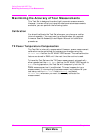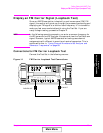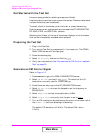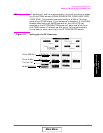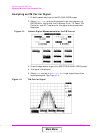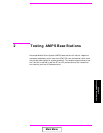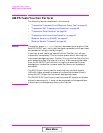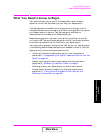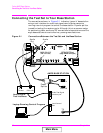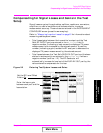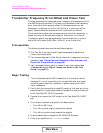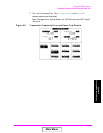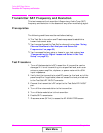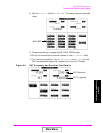
30 Chapter 2
Testing AMPS Base Stations
AMPS Tests You Can Perform
AMPS Tests You Can Perform
The following tests are explained in this manual:
• "Transmitter Frequency Error/Offset and Power Test" on page 34.
• "Transmitter SAT Frequency and Deviation" on page 36.
• "Transmitter Data Deviation" on page 38.
• "Transmitter Maximum Voice Deviation" on page 40.
• "Receiver Sensitivity (SINAD)" on page 42.
• "Receiver Squelch Threshold" on page 45.
CAUTION Transmitter power (TX Power) can only be measured through the Test
Set’s RF IN/OUT port. Verify that the signal connected to this port does
not exceed the limits printed by the port.
If you hear a loud “warbling” sound from the Test Set, turn off your
transmitter immediately! This is the over-power alarm, warning that
instrument damage may occur. Caution: Turning the Test Set off at this
point does not protect the internal circuitry. Also, removing the cable
from the RF IN/OUT port without turning the transmitter off may
damage your transmitter or power amplifier (due to an impedance
mismatch).
The ANT IN port is only used for analyzing very low level signals
(≤60 mW). Never attempt to measure a transmitter’s power directly
using the ANT IN port, as instrument damage may occur.
The DUPLEX OUT port is only used to provide RF signals to the base
station’s receive port(s). It must not be connected to the base stations
transmit port or damage may occur to the Test Set.
Main Menu



